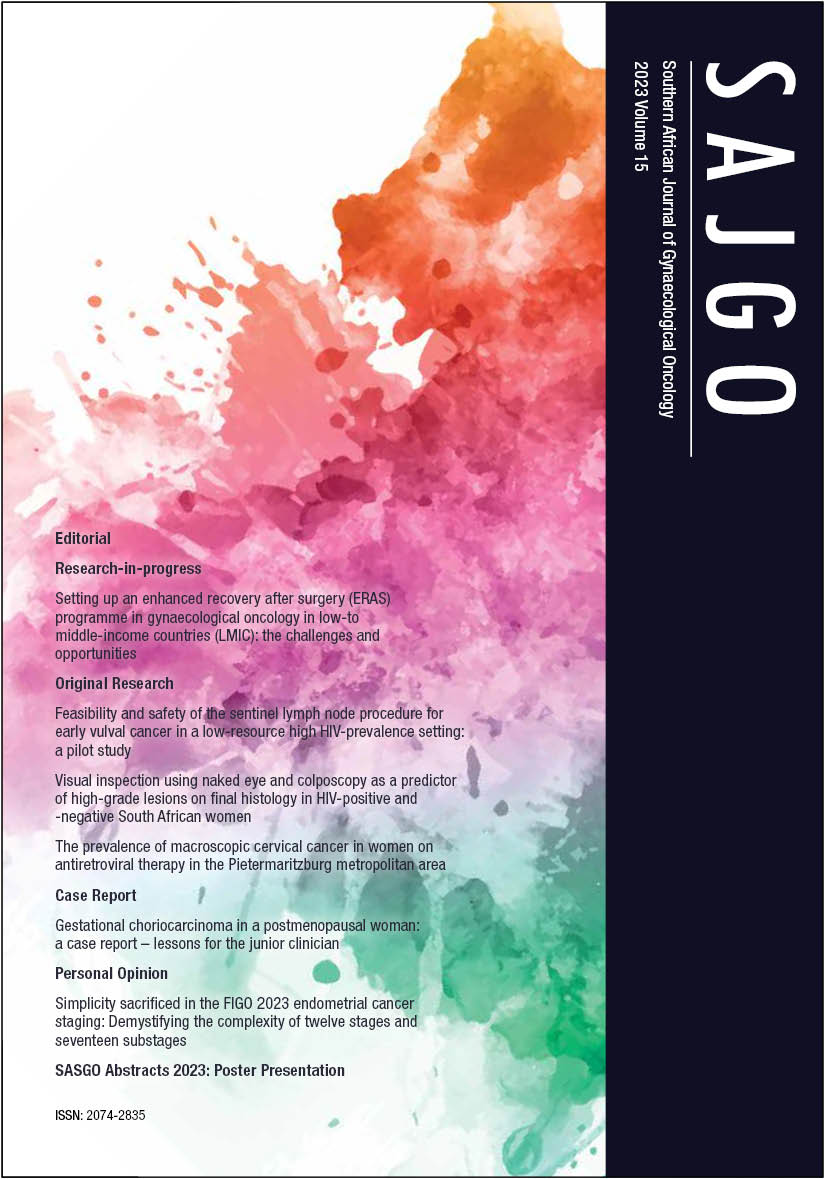Visual inspection using naked eye and colposcopy as a predictor of high-grade lesions on final histology in HIV-positive and -negative South African women
Keywords:
cervical cancer, visual inspection with acetic acid (VIA), visual inspection with lugols iodine (VILI), colposcopic impression, Reid’s colposcopic index (RCI)Abstract
Background: Although potentially preventable, cervical cancer is the fourth most common cancer among women globally and a leading cause of cancer-related deaths. Women living in resource-limited countries are especially at risk due to poor access to cervical cancer screening and treatment. Alternative cervical cancer screening methodologies have been investigated where cytology-based screening is not feasible. This study aimed to assess the test performance of naked eye visual inspection analysis, in addition to the comparative performance of physician/colposcopist clinical impression to Reid’s colposcopic index (RCI) grading system for histopathology, in the South African setting.
Methods: Women living with HIV (WLWH) and HIV-negative women aged 25 to 65 were recruited from three sites in South Africa. A cross-sectional study which assessed visual inspection with acetic acid (VIA), visual inspection with lugols iodine (VILI), colposcopic impression and RCI for the detection of histologically confirmed CIN2+ and CIN3+ was performed. Test positivity rates, sensitivity, specificity, and predictive values were calculated.
Results: Three hundred and forty-four WLWH and 409 HIV-negative women, with a median age of 40 years, were included in this analysis. Histologically confirmed CIN2+ was present in 38.51% and CIN3+ in 18.99%. Overall, positive test rates for VIA were 42.76%; VILI were 45.68%, colposcopic impression were 48.26% and RCI were 46.65%. Overall sensitivities/specificities for VIA and VILI for CIN3+ were 76.92/65.25% and 75.52/61.31%, respectively. The sensitivities however increased for WLWH (VIA 82.61%; VILI 80.43%) and decreased in HIV-negative women (VIA 66.67%; VILI 66.67%). Colposcopic impression/RCI performed better in WLWH (PPV 37.96/37.74%) than in HIV-negative women (PPV 25.63/26.80%).
Conclusion: The current study demonstrates that visual inspection methods perform better in WLWH than in HIV-negative women. VIA and VILI performed similarly within each sub-population, as did colposcopic impression and RCI. The use of visual inspection methods in cervical cancer screening in WLWH is warranted.
Downloads
Published
Issue
Section
License
South African Journal of Gynaecological Oncology (SAJGO) Copyright is held by South African Society of Gynaecologic Oncology (SASGO). Copyright of the articles is held by the authors. The work is licensed under a Creative Commons Attribution-Non-Commercial Works 4.0 South Africa License (CC BY NC). Material submitted for publication in the SAJGO is accepted provided it has not been published elsewhere. The SAJGO does not hold itself responsible for statements made by the authors. The opinions expressed in this publication are those of the authors. They do no purport to reflect the opinions or views of SASGO or its members.
